Domestic RTK demining
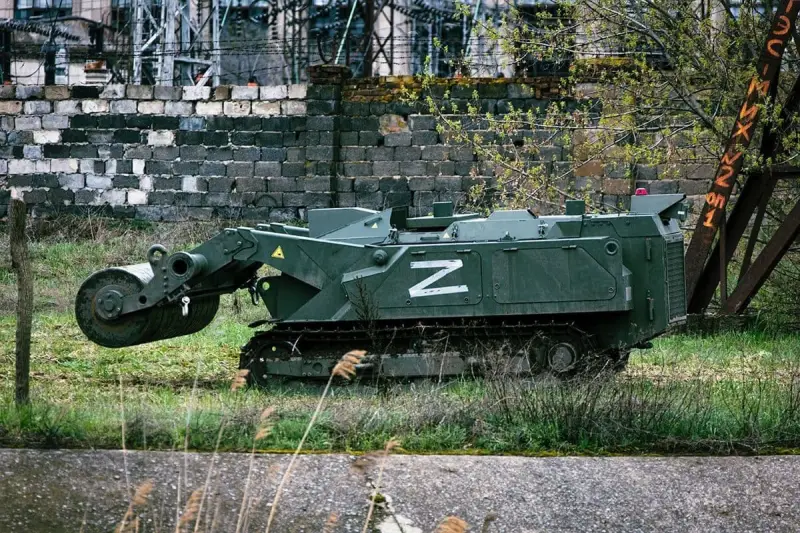
RTK "Uran-6" in Lugansk, April 2022. Photo of the Russian Ministry of Defense
The engineering troops of the Russian army are supplied with modern robotic mine clearance systems of several types. They are actively used for clearing terrain in different areas, both in our country and abroad. Practice has already shown the effectiveness and value of such technology, and therefore the industry continues to develop new projects and present promising samples.
Mass "Uranus"
The first modern anti-mine demining system supplied to our engineering troops in the last decade was the Uran-6 product developed by JSC 766 UPTK (now SKB MO). At one time, this complex successfully passed tests and entered mass production. To date, the troops have created a full-fledged fleet of such equipment, the size of which allows for mine clearance activities to be carried out with the required intensity.
The Uran-6 RTK is built on the basis of a protected tracked chassis with remote control. The chassis has a pair of hydraulic manipulators with mounts for working equipment. It is envisaged to use several types of trawls - roller, striker and milling. It is also planned to install engineering equipment in the form of a bulldozer blade and grab, suitable for clearing rubble.
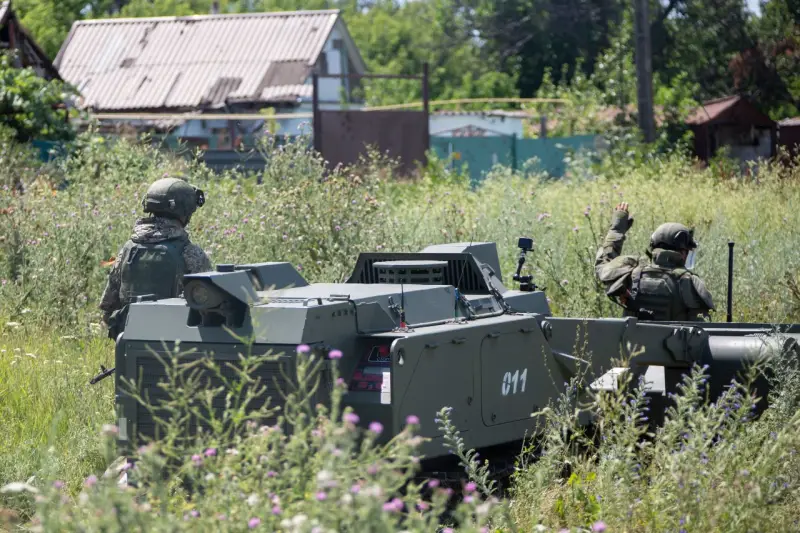
The work of sappers in Mariupol, June 2022. Photo of the Russian Ministry of Defense
All standard Uran-6 trawls are designed to clear a continuous passage. The width of the trawling strip is 1,7 m. During operation, the RTK moves at a speed of no more than 5 km/h, which is sufficient to influence almost all explosive objects in the ground. Trawling cleanliness exceeds 95%. At one refueling the complex operates for approx. 5 hours
Uran-6 products were actively used in a variety of areas and conditions, both in our country and abroad. In the past, such equipment was used to carry out humanitarian demining of agricultural land in the North Caucasus. Also, RTKs, along with other engineering equipment and equipment, were used in Syria.
Since the beginning of 2022, Uran-6 complexes have been operating in different areas of Donbass. As a result of the fighting, significant areas of the area were mined; There are also unexploded ordnance and other threats. To combat such objects and return Donbass to normal life, humanitarian demining is being carried out using all means available to supply engineering troops.
Modern RTCs play a significant role in these processes. According to various sources, to date, with the help of Uranov-6, sappers have cleared hundreds or thousands of square kilometers of territory and neutralized/destroyed thousands of explosive devices and other dangerous objects. At the same time, it is obvious that the work of the RTK and their calculations will not stop yet and will continue even after the victory.
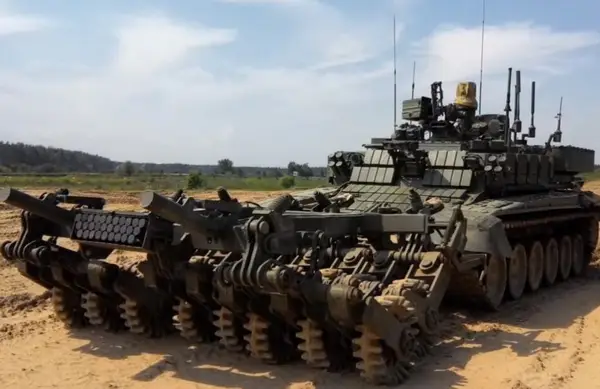
RTK "Prohod-1" in working configuration. Photo by VNII "Signal"
Heavy class
At the beginning of the 3s, NPK Uralvagonzavod introduced the BMR-XNUMXM Vepr heavy mine clearance vehicle based on the main tank T-90. In the mid-1s, the VNII Signal modernized this product and turned it into a robotic complex. A remote-controlled version of the Vepr, called Prokhod-2016, was first introduced in XNUMX.
BMR-3M and Prokhod-1 are built on the chassis of the T-90 tank. The main units of the armored hull with projectile protection, the power plant and the chassis have been preserved. At the same time, a cabin appeared on the tower, in which the crew and main units are located. At the bow of the hull there are mounts for trawling equipment, at the stern there is a platform for transporting cargo. The resulting engineering vehicle has the dimensions (excluding attachments) of a tank and a mass of 48 tons. Mobility parameters remained at the T-90 level.
Vepr can use different types of trawls. The robotic vehicle “Prokhod-1” is equipped with a “solid tank mine trawl” TMT-S, developed specifically for it. This device is made in the form of a frame on which 15 rollers are placed for continuous trawling. The rollers are supplemented with electromagnetic attachments for mine sweeping with a magnetic target sensor and anti-aircraft ammunition. In addition, on board the Vepr and Prohod there is a jamming station to suppress remote control channels for explosive devices.
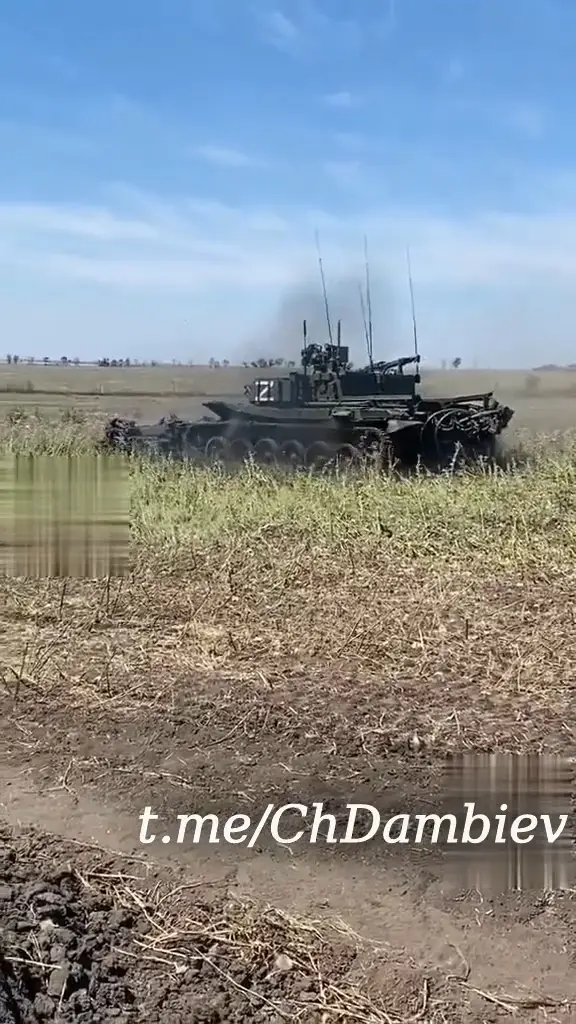
Complex "Prohod-1" in Donbass, summer 2022. Photo Telegram / Dambiev
During trawling, “Prohod-1” reaches speeds of up to 15 km/h. The TMT-S trawl clears a 4,5 m wide strip of anti-personnel and anti-tank mines; anti-aircraft mines are detonated within a radius of 100 m.
The Prokhod-1 RTK retains the standard crew positions and controls, which allows it to be used as a regular engineering vehicle. In addition, there are remote control facilities. Cameras are located around the perimeter of the body, giving an all-round view, and inside there is a command receiver, controls and actuators. The crew can control the work Robot from a safe distance.
No later than 2016-17. the Prokhod-1 complex was launched for testing, which was to determine its future. It is unknown how these events ended. The production and supply of new RTKs to the army was also not reported. However, it seems that the engineering troops became interested in such equipment and began to use it.
In July 2022, it became known about the appearance of at least one RTC “Prokhod-1” in the Special Operation zone. A video appeared in open sources showing the operation of such a machine on the ground in an unknown area of Donbass. The short video demonstrated the movement of the RTK through a dangerous area, as well as the collision of the trawl with an explosive device and the detonation of the latter. Details of such demining activities were not provided. Perhaps these were military tests using one of the prototypes.
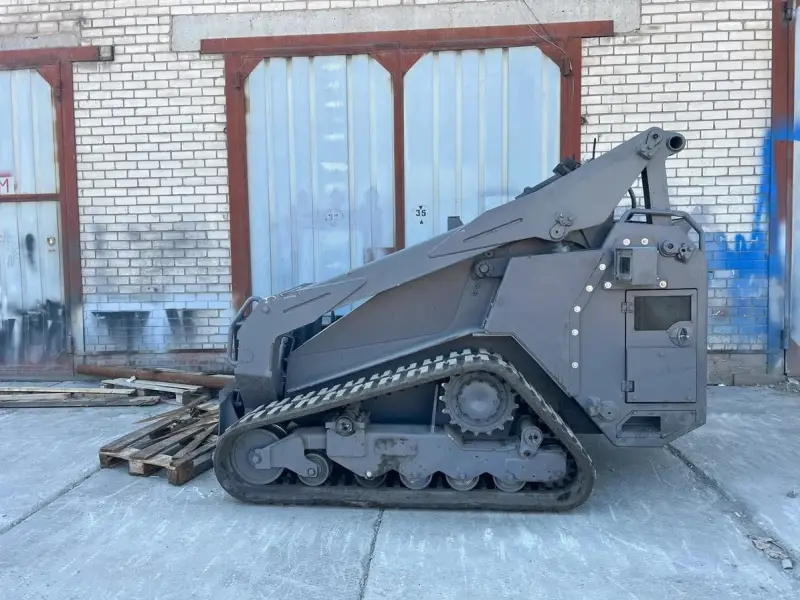
Product MT1. Photo "DST-Ural"
On a ready basis
Not only defense industry enterprises are now involved in the development of engineering equipment. So, in 2022, the Chelyabinsk tractor plant DST-Ural joined this process. At the suggestion of the leadership of the Chelyabinsk region, he quickly developed and brought to testing and trial operation an interesting model of a mine clearance RTK. Such a vehicle was supposed to be one of the answers to remote mining of Donbass settlements by Ukrainian formations.
The first example of engineering equipment from DST-Ural was the MT1 complex. It was carried out on the basis of a serial tracked loader PG20 by removing unnecessary units and installing new devices. The car lost its cabin, but received remote control and monitoring equipment. In addition, it was equipped with a roller trawl placed on a standard boom. Parts and assemblies exposed to shock waves and fragments are made of armor.
Just a few months later, in the fall of 2022, the RTK type MT2, which was a deeply modernized version of the previous MT1, reached testing. This project retained the tracked platform, but used a more powerful engine and improved remote controls. The MT2 also received a striker trawl, used instead of the previous roller one.
Products MT1 and MT2 have a working weight of approx. 8 tons and are capable of destroying dangerous objects with a charge of up to 4 kg. Through successive improvements, a control system with a range of up to 2 km was created. When exposed to interference from the enemy, the range is reduced to hundreds of meters, but the RTK remains operational.
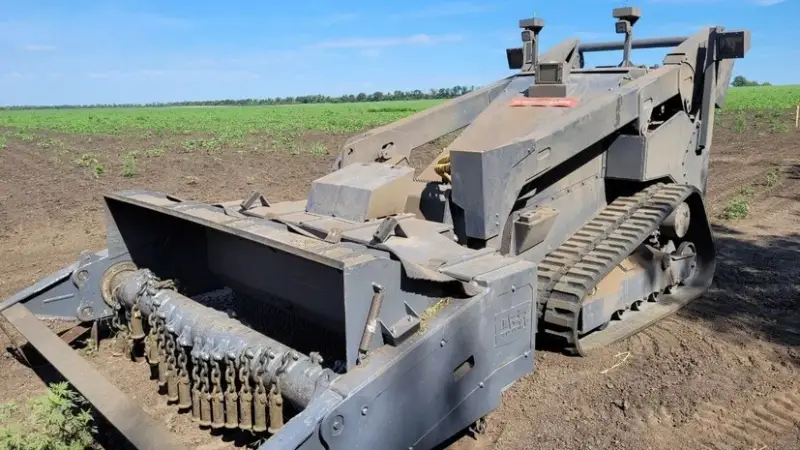
Complex MT2 with striker trawl. Photo "DST-Ural"
At the end of last year, the DST-Ural plant announced the development of the next RTK under the designation MT10. It is being built on the basis of one of the bulldozers produced, due to which the technical and operational characteristics should increase. In this case, developments and devices from previous projects will be used.
Reportedly, the MT1 and MT2 complexes were produced in several copies and have been operating in the Donbass since the fall of 2022. Their actual operators were the structures of the Ministry of Emergency Situations. They plan to offer the promising heavy RTK MT10 to the Ministry of Defense. In the near future it will be tested, based on the results of which the issue of acceptance for supply will be decided.
Promising direction
The engineering forces have a variety of means for clearing territories from explosive objects, and robotic systems have a special place in this context. They are capable of performing mine clearance or clearance tasks without exposing operators to undue risks. The high effectiveness of such technology has been repeatedly demonstrated in different regions using the example of various threats.
Mine clearance RTCs have been highly appreciated by operators, which contributes to the further development of the entire area. To date, our industry has developed a number of complexes of this kind, and some have already been put into service. Also, several other developments of this class have reached operation in real conditions. Now we can expect that they will also be accepted for supply, and that new interesting samples will appear in the future.
Information